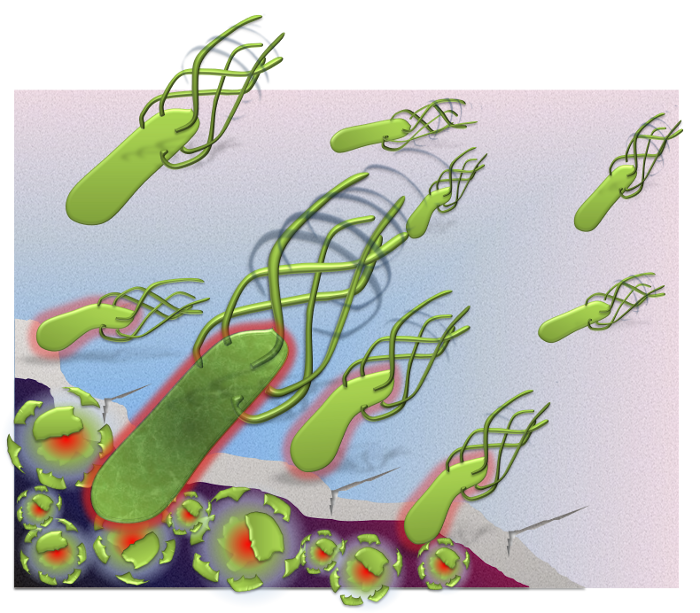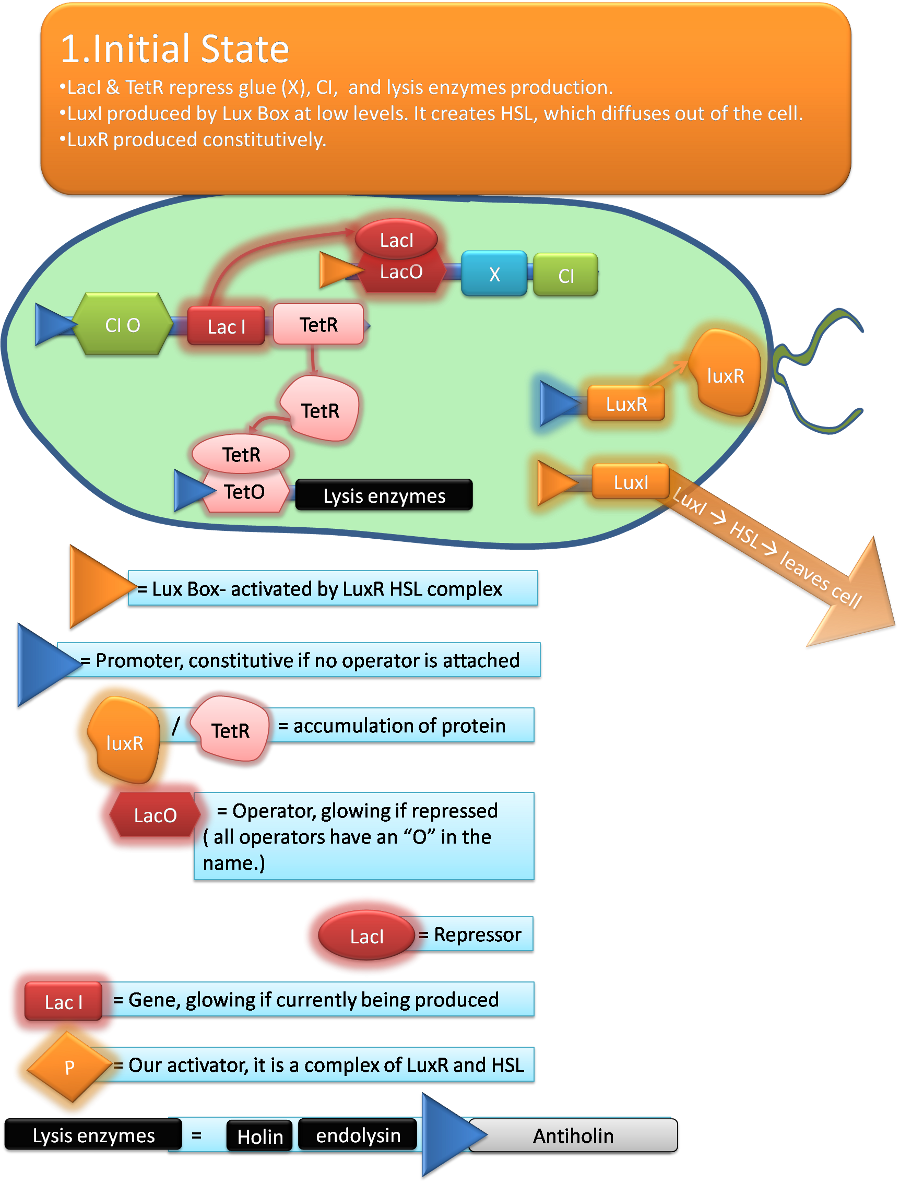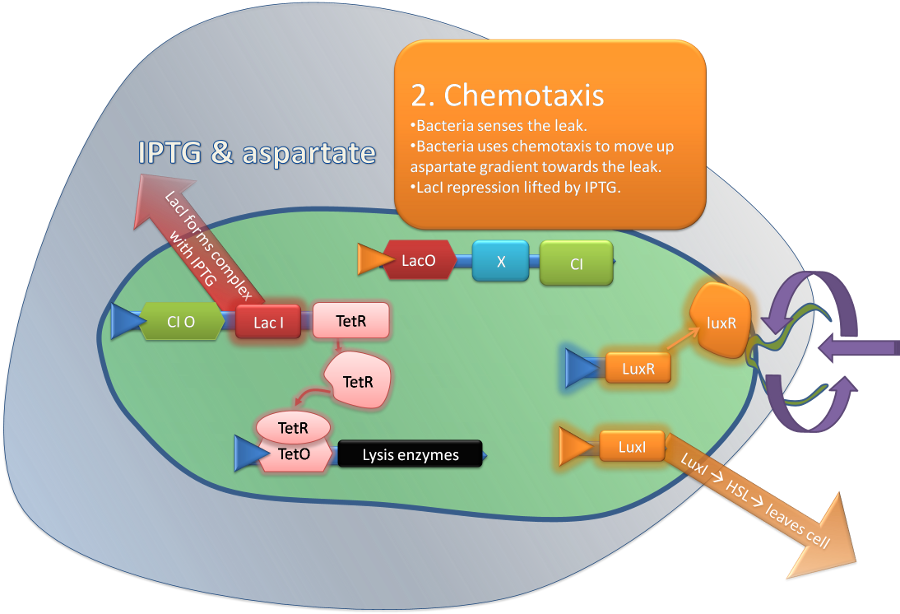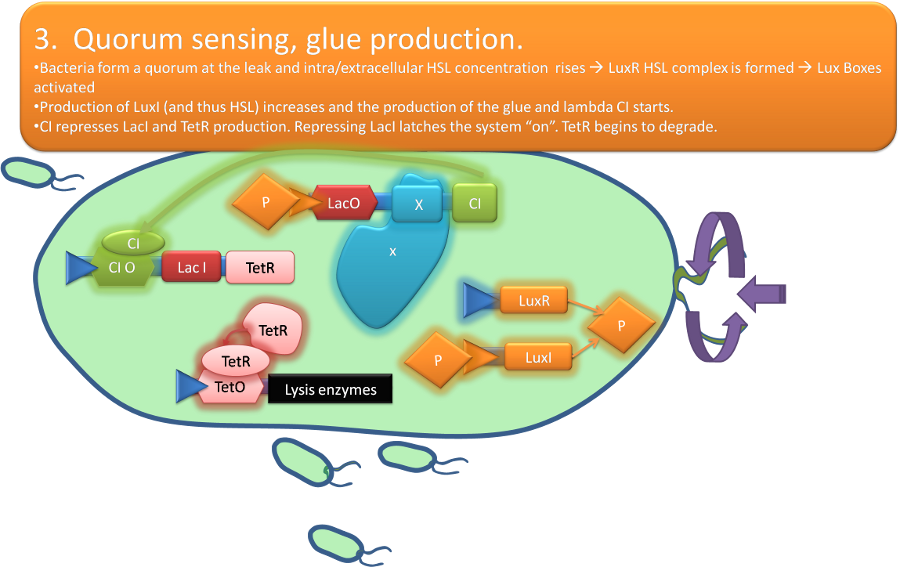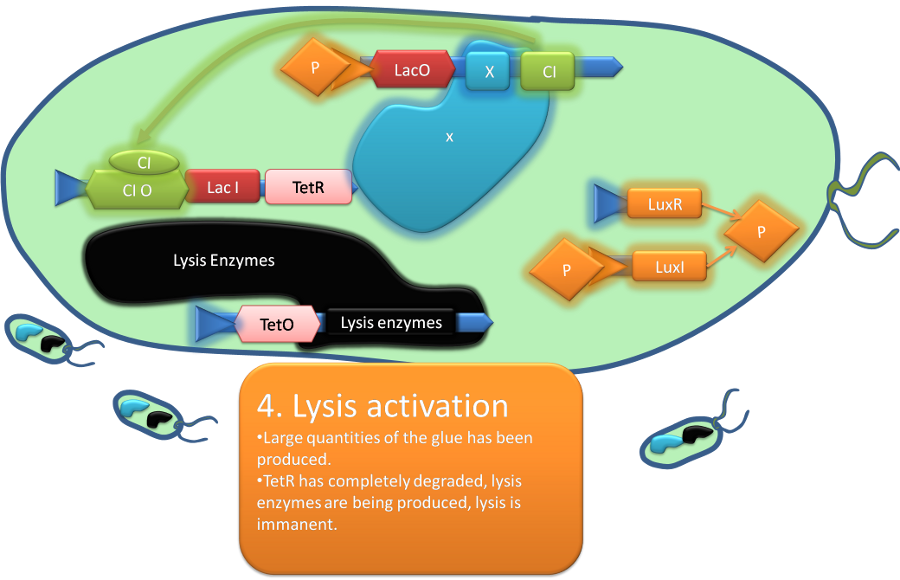Team:Aberdeen Scotland/Project
From 2009.igem.org
University of Aberdeen - Pico Plumber
Contents |
Pico Plumber: A Project Overview
Introduction
Every day millions of litres of water are lost from leaky pipes all throughout Britain. [1]
The London Assembly alone reported a loss of nearly a billion litres of water for the region in 2003/2004. [2][3]
Similar problems are experienced by the Oil and Sewage industries where leaky pipes not only translate into a loss of revenue, but also put strain on the environment.
With this in mind we decided to explore ways in which synthetic biology can be used to address this and comparable problems. We concluded that the most useful solution would be one that can detect microscopic leaks by itself and seal them.
In order to achieve this we identified a number of characteristics we wanted our Bacteria to display.
1. Motility - In order for our bacteria to move towards the leak.
2. An AND gate which would turn on production of tropoelastin and lysyl oxidase (our “Glue”)
3. A latching mechanism that would continue production of tropoelastin once the AND gate was triggered
4. A timed lyses’ mechanism that would allow for protein production, after the AND gate trigger, but eventually lyses the cell and release the ”glue”.
Since developing a fully functional version of this that can be used in industry would be a task far beyond the scope of an undergraduate summer project, our aim was to develop a proof of concept for the various elements of the system, using a combination of biological and computational approaches, under favourable conditions and upon success to develop them further.
The Pico Plumber in pictures
Scientific summary
Synthetic biology approaches are being used in a novel iGEM project that will engineer E. coli to detect and repair leaks and corrosion in pipes. The bacterium will respond by migrating to the site of the leak and plugging the breach using a protein-based glue. This solution could be used to seal leaks in pipes in inaccessible places, for example within a nuclear power station cooling system, or on a space station. The novelty of the biological engineering lies in the implementation of a two-component glue to seal the pipe, analogous to an epoxy resin that is only activated when two components, an adhesive and hardener, are mixed. In this project E. coli is engineered to synthesise the glue components (tropoelastin and lysyl oxidase) in different cellular compartments, which are then mixed following autolysis of the bacterium. The relative timings of the elastin glue synthesis and autolysis steps are carefully controlled, thus ensuring regulated lysis, but only after tropoeleastin/lysyl oxidase synthesis.
To achieve these aims, E. coli will be engineered to respond to an inducer molecule (IPTG) released from the site of a pipe breach. In this project, our model pipes will have a surface coating of the inducer and the attractant aspartate, which are only released into the pipe in the case of a breach in the wall. Once the inducer IPTG is sensed by the bacterium, lacI repression will be relieved, inducing expression of tropoelastin (adhesive) within the E. coli, and the enzyme lysyl oxidase (the adhesive hardener) on the cell surface. This will be achieved by expressing lysyl oxidase as a translational fusion with the outer membrane protein OmpX. Motile E. coli will be used to allow chemotactic migration of the tropoelastin-expressing E. coli to the site of the pipe breach.
The expression of tropoelastin within the cytoplasm, and lysyl oxidase on the cell surface, will maintain the glue components in separate compartments. Their mixing at the site of pipe breach will be achieved by regulated autolysis, triggered by the lytic peptide T4 holin, initiating a cross-linking reaction and the formation of elastin. However, holin expression will be delayed relative to that of tropoelastin and lysyl oxidase, to allow the manufacture of glue components before cell lysis and glue mixing is initiated. This temporal delay will be achieved by using IPTG to induce a molecular inverter element that switches off a repressor of holin production. Slow decay in the levels of this repressor will trigger eventual holin synthesis thereby allowing cell lysis and tropoelastin/lysyl oxidase mixing.
This project is designed in a modular way; individual components will be mathematically modelled and their design improved, before being built and tested. The separate testing of these modules will ensure that the project will not be compromised should any one module perform unpredictably. At the same time, the dependence of the project on the carefully staged expression of different gene modules will ensure a challenging research project for our theoreticians and biologists alike, who will work together to improve and implement the design of a novel two-component microbial glue for use in self-healing pipes.
References
[1] http://thescotsman.scotsman.com/uk/Massive-scale-of-UK-water.5514624.jp
[2] http://news.bbc.co.uk/1/hi/england/london/4330721.stm
[3] http://www.thameswater.co.uk/cps/rde/xchg/corp/hs.xsl/6869.htm
 Supervisors Supervisors
|
Continue 
|
 "
"
